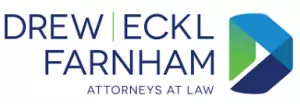A continual issue that our clients have seen is for contractors and public adjusters to attempt to blur the distinction between ACV and RCV figures in an effort to recover RCV upfront and without incurring the RCV expenses. In appraisal, this circumstance can arise when a policyholder demands appraisal but only includes an RCV figure in their appraisal demand. In litigation, we have seen policyholders attempt to introduce RCV-only figures where the evidence shows that the insured did not perform repairs. The purpose of this article is to provide insurers with a strategic response to these maneuvers in the context of recent federal court rulings.
Under most standard property insurance policies, a policyholder is entitled to an upfront actual cash value (“ACV”) payment for covered damages. Replacement cost value (“RCV”) is the cost of replacing the property without any deduction for depreciation. “Depreciation” is the decline in value of property due to age, use, wear and tear, etc. Generally, under the terms of a policy, if a policyholder does not incur replacement costs, he or she is not entitled to recoverable depreciation. See Marchman v. Grange Mut. Ins. Co., 232 Ga. App. 481, 483, 500 S.E.2d 659 (1998). As a result, distinguishing between an ACV and RCV calculation is important. Fortunately, it appears that courts are catching on to the difference.
Appraisal Concerns
Appraisal “provides a method by which the insurer and the insured can make a final determination regarding the actual cash value” of property damages. McGowan v. Progressive Preferred Ins. Co., 281 Ga. 169, 171 (2006). Generally, the appraisal clause is invoked after the insurer issues the upfront ACV payment to the policyholder. Recently, we have seen appraisal being invoked by insureds along with an estimate or damages proposal that reflects RCV numbers only, leaving out comparative ACV figures. This presents a perilous situation. If repairs have not been performed when appraisal is demanded and the appraisal demand is based upon an RCV figure, then the insurer agrees to appraisal at the risk of being presented with a faulty appraisal award. This ultimate award could be faulty if repairs remain uncomplete and the award is premised upon RCV figures rather than ACV figures. Most problematically, if the appraisal award does not even specify if the award is an RCV or an ACV figure, the insurer may have no basis to contest its legitimacy after the fact. Bell v. Liberty Mutual Fire Ins. Co., 319 Ga. App. 302, 305, 734 S.E.2d 894 (2012) (finding that an umpire is not required to itemize appraisal awards, absent specific policy language requiring the same). Therefore, in a situation where the repairs have not been performed, insurers should confirm that an ACV estimate is being compared with an ACV estimate before agreeing to appraisal. This confirmation will allow the insurer to clarify the scope of appraisal and to determine if appraisal is appropriate.
A recent 11th Circuit decision supports this approach. See CMR Construction and Roofing, LLC v. Empire Indemnity Ins. Co., 843 Fed. Appx. 189 (11th Cir. January 26, 2021). In that case, the insurer issued an upfront payment of $96,763.53 and the policyholder's contractor sent a replacement cost estimate for close to $5 million. The contractor, CMR, obtained an assignment of benefits from the policyholder. The $5 million estimate was presented to the insurer around 5 months after the loss and no repairs had been performed at that point in time. CMR sued Empire, alleging that Empire breached the insurance policy and “underestimated” the repair costs. During discovery, Empire requested additional information regarding the $5 million estimate, which revealed that this figure was an RCV calculation and that CMR had not calculated the ACV of repairs at all. While litigation was pending, CMR invoked the appraisal clause and sought to stay litigation.
After the close of discovery, the district court granted summary judgment in favor of Empire on the grounds that the insured did not comply with a condition precedent to receiving replacement cost by failing to complete repairs. Further, the district court found that CMR could not show that Empire breached a duty to pay ACV because CMR never sought ACV – it only estimated and claimed entitlement to RCV damages. Id. at 191-192. In upholding the lower court's summary judgment award, the 11th Circuit focused on the specific replacement cost policy language, which provided that RCV would not be paid “until the lost or damaged property is actually repaired or replaced” and “unless the repairs or replacement are made as soon as reasonably possible after the loss or damage.” Id. at 192. The 11th Circuit found these preconditions unambiguous, and therefore, Empire did not breach the policy by relying upon them. The 11th Circuit further agreed that no breach existed where the CMR never requested payment for the actual cash value of the repairs. Finally, the 11th Circuit found that CMR waived appraisal by not initially invoking appraisal when the estimates differed and instead waiting several months before filing suit. CMR did not identify its desire to invoke appraisal on the case management report and waited months after the advent of litigation before attempting to raise the issue of appraisal.
Introduction of Damages Evidence at Summary Judgment
The scope of admissible documentation being offered in support of motions for summary judgment is always a hot button issue. The Northern District of Georgia recently discussed the admissibility of an appraiser's previously undisclosed estimate in Elder v. State Farm Fire and Cas. Co. where the appraiser's opinion was being offered in opposition to a motion for summary judgment. 2021 WL 4048789 (N.D.Ga. August 2, 2021). In that case, State Farm initially released its calculation of the ACV of the damages and subsequently released depreciation holdback after it received documentation that appeared to show that repairs were performed. The insured never incurred repair costs in excess of those paid by State Farm but nonetheless sued State Farm to recover for the RCV of the damages. State Farm sought to strike the opinion of the insured's appraiser, Gary Gelatt, on the grounds that all of his estimates contained RCV-only figures (and no ACV determination) and that Gelatt did not comply with the disclosure requirements of Rule 26(e) of the Federal Rules of Civil Procedure. Specifically, Gelatt testified during his deposition that he never calculated the ACV for the damages. Then, approximately two months after the close of discovery and in response to State Farm's motion for summary judgment, Mr. Gelatt provided an ACV calculation that was almost identical to his previous RCV determinations. The court agreed to strike Mr. Gelatt's opinion from the record and agreed with State Farm's argument that the failure to produce this relevant evidence violated Rule 26(e) and found that no justification for the violation existed. Further, the failure to disclose the evidence “prejudice[d] State Farm's ability to defend itself.” Id. at *5. Ultimately, the court found that the insured's failure to repair or replace the damage was fatal to its claim for replacement cost. Id. at *6-7. The court also found that the insured did not provide any admissible evidence that disputed State Farm's assessment of the ACV of the damages and awarded summary judgment in favor of State Farm. Because Mr. Gelatt's opinion was stricken from the record, it could not be used to dispute State Farm's assessment of the ACV of the damages.
Best Practices and Takeaways
When faced with an appraisal demand, insurers can better prepare themselves for the appraisal process by: (1) making sure to receive clarification as early as possible regarding whether an estimate represents ACV or RCV; (2) request constant updates regarding the status of repairs; and (3) targeting written discovery toward the questions of whether estimates are RCV or ACV estimates and whether the damages are premised upon RCV or ACV figures. Additionally, asking appraisers whether ACV calculations have been made and taking a deep dive into the basis for the appraiser's estimate is key. These inquiries and best practices allow insurers to determine if the estimates compare “apples to apples” and whether appraisal is truly appropriate.
The content of this article is intended to provide a general guide to the subject matter. Specialist advice should be sought about your specific circumstances.

